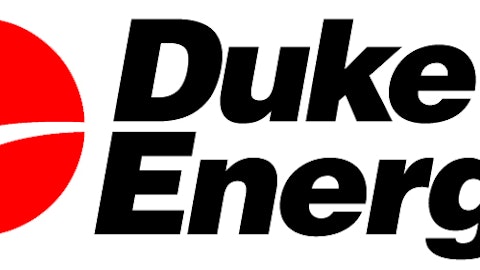
New kids on the block
SolarCity Corp (NASDAQ:SCTY) is the new cool kid when it comes to solar. It doesn’t have to pay for any real estate, customers offer up their roofs for installations. Customers aren’t getting the short end of the stick either. They sign long term contracts with SolarCity Corp (NASDAQ:SCTY) to purchase electricity, and this gives SolarCity Corp (NASDAQ:SCTY) bond like income for years to come.
SolarCity Corp (NASDAQ:SCTY) has been growing revenue at an astounding clip. The company expects to grow at an annual rate of 60% for at least the next three years, and already has a generation capacity of 250 MW with 46 MW slated to be finished next quarter. The deferred revenue that SolarCity recognizes grew 15% to over $1.22 billion. This means that even if the economy runs into a few bumps, this company can easily hold its own, and just slow down investment in new installments.
SolarCity Corp (NASDAQ:SCTY) is rapidly growing and helping customers reduce their electric bills, while adding generating capacity that is competing with the grid energy already in place. At this point in time, the company is helping alleviate peak energy needs, by providing the most amount of electricity at the hottest point of the day. However, as capacity grows, so does SolarCity Corp (NASDAQ:SCTY) as a competitor in the wholesale electricity market.
If you can’t beat ‘em, join ‘em
NV Energy, Inc. (NYSE:NVE) was just one of the smaller electric utility companies that looked ripe for the picking, and in the second quarter this year, it was scooped up by Berkshire Hathaway’s MidAmerican unit.
NV Energy, Inc. (NYSE:NVE) was located in Navada, with a market cap of $4.6 billion. NV Energy, Inc. (NYSE:NVE) served 2.4 million Navadans, or 90% of the state’s population, in addition to the 40 million tourists annually. NV Energy, Inc. (NYSE:NVE) has 6,078 MW of generation capacity and can generate 82% of peak load, resorting to the retail markets for the rest. In an environment of electric prices that keep falling, this is good news for NV Energy and its customers.
NV Energy, Inc. (NYSE:NVE) has some of the highest gross margins in the industry at 39%, as more and more of its generation capacity comes from solar and wind, its variable costs continued to plummet, increasing its margins. NV Energy, Inc. (NYSE:NVE) pays out 50% of its earnings to support a dividend of 3.2% making it very conservatively managed. It’s no wonder MidAmerica wanted to pick up these assets.
Sweet Carolinas
Duke Energy Corp (NYSE:DUK) operates as the largest regulated utility in the country with a market cap of $45 billion. It stretches over most of the Carolinas, Florida and Indiana. It has a generating capacity of 57,700 MW and supplies this electricity and natural gas to 7.2 million customers.
Utility companies could be in some serious trouble. The most susceptible companies are in rural areas with high capital costs. As Duke Energy Corp (NYSE:DUK) covers most of the Carolinas, it does have some large cities that it services, but there is also an expansive rural network. This rural portion of its service area has high fixed costs of distribution can take years to recoup. If customers were to switch to renewable sources on their own, it could end up costing the utility millions. Duke Energy Corp (NYSE:DUK) would end up charging more to all of its customers as a distribution fee to maintain its current network of power lines as a backup electricity supply.
Duke Energy Corp (NYSE:DUK) has large exposures to the wholesale electricity market with its large generation fleet. It also has a lot of exposure to rural sunny areas in the south, the prime candidates to cut the cord. There could be a lot of challenges ahead of this power behemoth.
Foolish bottom line
Electric companies have already started to consolidate in the regulated distribution segment. These assets will be the most valuable in the future, as they will be considered the “backup structure and medium of exchange” for consumers to move electricity. Much like water utilities own the pipes. Electric utilities that have a lot of revenue coming from coal will and have regulated markets in the south will be the most susceptible.
SolarCity Corp (NASDAQ:SCTY) has seen a massive run up in its stock price recently. This company’s decentralized solar panel “generators” provide it bond-like income that will continue to grow over time as the price of panels comes down. Once this stock pulls back, it would become a perfect pick for a long term investor.
The article Disruptive Technology: The Sun – Part 1 originally appeared on Fool.com and is written by Wes Patoka.
Wes Patoka owns shares of Duke Energy. The Motley Fool has no position in any of the stocks mentioned. Wes is a member of The Motley Fool Blog Network — entries represent the personal opinion of the blogger and are not formally edited.
Copyright © 1995 – 2013 The Motley Fool, LLC. All rights reserved. The Motley Fool has a disclosure policy.


